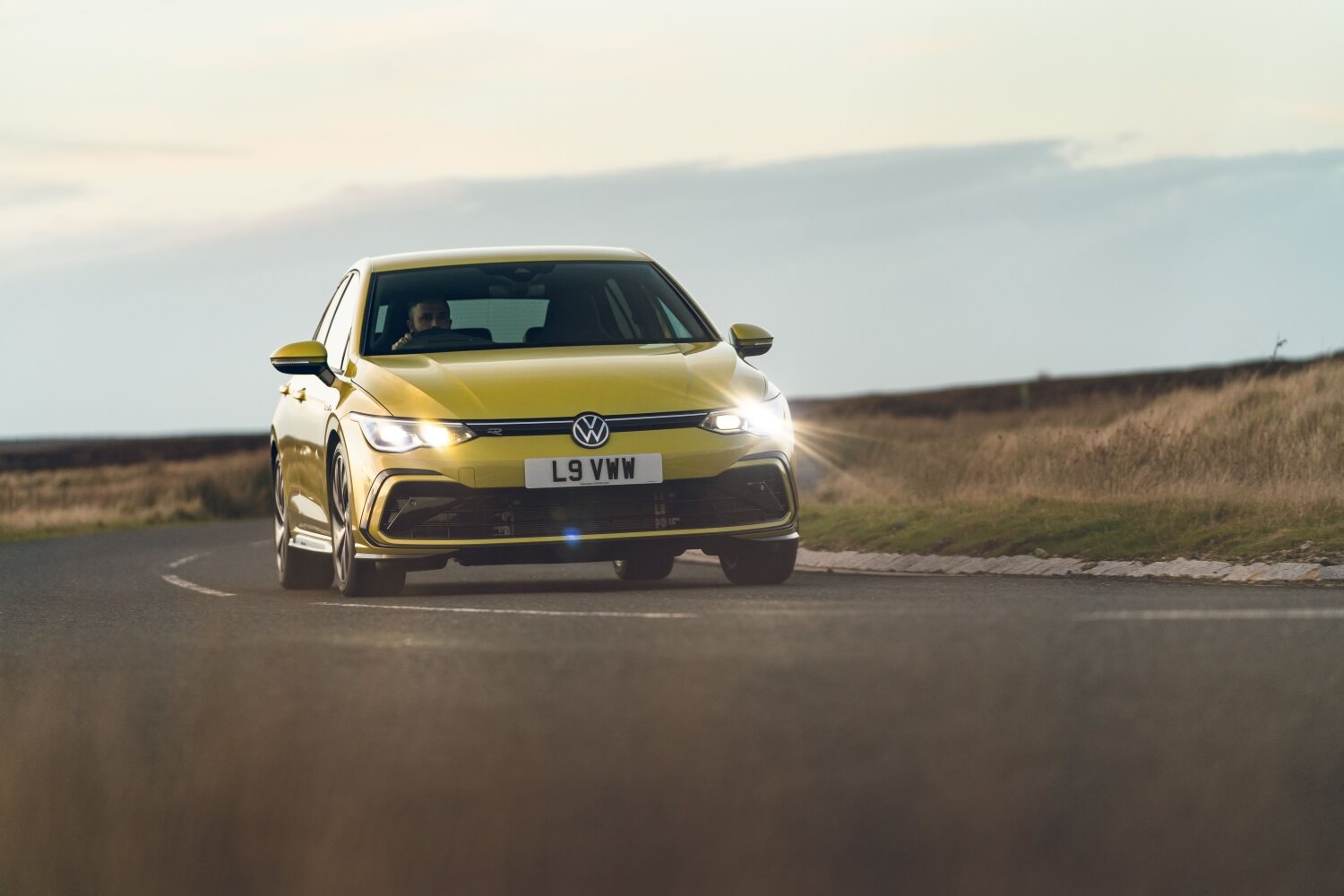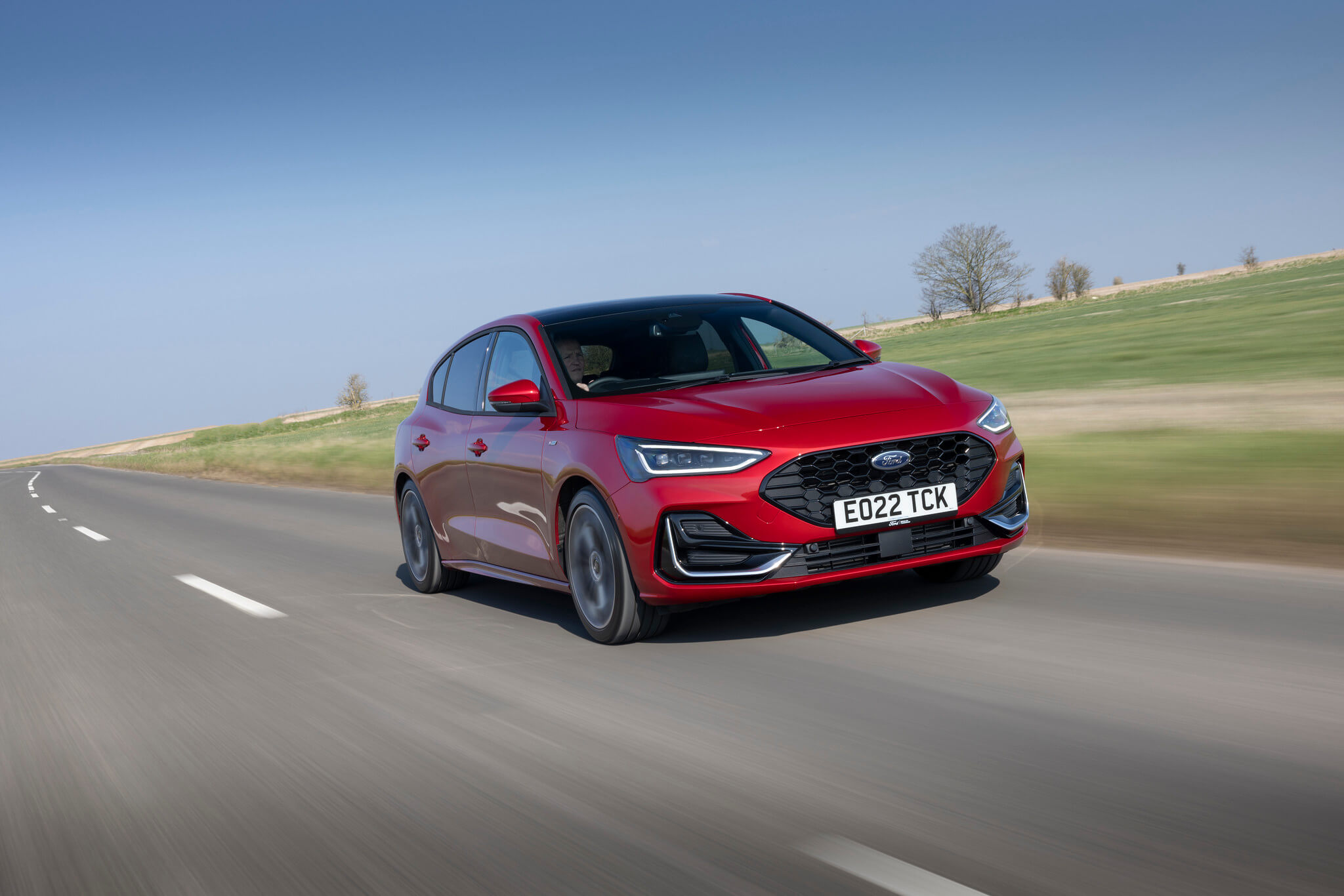The Golf vs The Focus
We’re going to be taking a look through some of the key features that both the Golf and Focus offer so that you’re able to pick out which one appeals to you.
Both the Volkswagen Golf and Ford Focus are household names. In the family hatchback world, they reign supreme, offering great levels of versatility and spaciousness at a price that is easy to swallow for most drivers.
If you’re after out-and-out versatility and space, then it’s the Blue Oval’s offering that we’d be leaning towards. It’s got the best seats-down boot room, while the interior plastics will stand up well to the rigours of family life.
However, if a refined driving experience and the latest tech are what you’re after, then the Golf remains the champ while its mild-hybrid engines provide an excellent blend of performance and efficiency.
In the battle of Volkswagen Golf vs Ford Focus, there are plenty of key areas of comparison, however, so let’s take a closer look at these two competitors.
The Ford Focus ripped up the rulebook when it hit the scene in the early 2000s. Here was a car which looked great, felt superb to drive and yet delivered everything on a budget. As it has grown, the Focus has become more upmarket and a bit more expensive, but remains a superb option as a family car.
The latest generation, introduced in 2018, has all the hallmark Focus features that you could want. It’s far more dynamic to drive than you might expect, ensuring that even the dreariest of commutes can be changed into something a bit more exciting.
Plus, with a range of punchy yet economical engine choices, the Focus manages to be both fun-to-drive and inexpensive to keep running. Remember, too, that a performance ‘ST‘ version sits at the top of tree.
A sight on our roads for more than 50 years now, the Volkswagen Golf is often seen as the ‘ideal’ everyday car. Just as suited to life swanning around the city as it is storming up and down the motorway, the Golf is, for many people, a car that ticks all the boxes.
The latest eighth-generation car brought a more tech-focused approach than we’d ever seen on a Golf, with a stronger focus on screens and displays.
It remains a great to car to drive, mind you, and while the Focus may lean towards dynamic handling, the Golf is more about comfort – though sporty GTI, GTD, GTE and R versions do add some extra spice into this Volkswagen’s recipe.
If you’re looking at the Focus then there’s plenty to dive into. As we’ve mentioned, this Ford offers excellent build quality that feels nicely made but also robust. This makes it great for busy families and, if you’ve got kids in tow, you’ll appreciate how easy it is to access the rear seats of the Focus.
Efficiency is a great plus-point for the Focus; pick the 94bhp diesel and you could see up to 64.2mpg, while the petrols will still achieve up to 50.4mpg. The lowest insurance group you’ll find a Focus sitting in is 11, too, so you shouldn’t have to worry about sky-high premiums.
When it comes to Golf, things do feel a bit more upmarket. As we’ve touched on, some of the plastics around the screen feel a bit cheap, but elsewhere it’s all very bang-on Volkswagen. Space is good through with loads of headroom – thanks to the Golf’s boxy shape – while the boot is easy to access too.
More than anything we love the Golf’s refinement as it makes longer journeys a breeze while the ride is perfectly suited to dealing with the UK’s pothole-covered roads.
As we’ve touched on, driving the Golf is all about comfort. Don’t think, however, that it’s some squashy, roly-poly hatchback as it’s more than capable enough through the bends.
On the motorway it’s smooth and quiet, so it’s be perfect for shorter commutes or longer journeys on the weekends. On sportier versions you’ll find a lowered, firmer suspension setup which does help the Golf to feel keener through the bends, but means it’s a bit sharper when travelling over poor surfaces.
Switch to the Focus and you’ll find things feel altogether sharper. Ford’s hatchback has always delivered a great driving experience and this latest version is no different, though it can feel a bit firm at times.
Switch to an ST-Line version and this firmness is taken up a notch, but some drivers might find that an easy trade-off against the sportier look and bigger wheels you get with this grade.
The Golf arrived with a more futuristic look for this eighth-generation car. With a full-width light bar at front and rear, it looked a lot more space-age than its predecessor.
It’s much the same story inside, as Volkswagen took a more button-free approach than we’d seen before. The screen has been known to be buggy – so make sure you play about with any car you’re looking at.
The Ford, meanwhile, has quite a sharp yet traditional look. It’s a design which has been on our roads for a while, but it still manages to look fresh.
Inside, there’s plenty of adjustability for the driver, while the main screen (on later versions) uses Ford’s clever SYNC system and is easy to use, though not as feature-packed as the one on the Golf.
Both of these cars get plenty of equipment from the off. The Focus has 16-inch alloy wheels as standard, alongside a 13.2-inch infotainment system with both Apple CarPlay and Android Auto smartphone connectivity systems.
The specifications have changed for the Focus over time, however, so you may find that standard equipment does vary a little.
The Golf has a 10-inch display as standard on all models and it’s jam-packed with features, including the smartphone mirroring systems that you get on the Focus.
You’ll also get 16-inch alloy wheels, automatic LED headlights and keyless start, plus a sharp digital dial setup which looks great and can be tweaked to show different information.
It depends what you’d like from these two. The Golf is arguably the more tech-focused, but we’ve found that the cabin in the Focus is more intuitively designed.
A hatchback needs to be practical and both of these cars do tick that box, but in different ways. With the Golf, you’re getting 380 litres of boot space as standard and you can boost that up to 1,237 litres by folding down the rear seats.
Sadly, they don’t go completely flat but do fold down enough so that larger items can be stored back there easily.
The Focus offers a slightly smaller seats-up boot at 375 litres, but it smashes the Golf out of the park when you fold down the rear seats, at which point the boot capacity swells to 1,354 litres.
The seats also go very near to flat, so it’s a breeze to get those bulkier items in and out.


The Seat Leon is often seen as the sportier option in the hatchback segment. It’s down to this car’s dynamic handling which rivals the Focus for involvement, even though the Leon sits on the same platform. As a result, you’ll get the same great levels of technology as the Golf, but with a slightly lower price – what’s not to like?
The latest Vauxhall Astra has shed the rather fusty image of its predecessor to become one of the sharpest-looking models on the market today. A lot of that is down to the cool ‘Vizor’ front-end design which you’ll see on a number of other Vauxhalls, but there’s also a tech-packed interior and a spacious cabin to check out. An electric version provides an option for drivers after a full EV, too.
Skoda’s Octavia continues to be a must-have for space-conscious buyers as it’s got a boot which trumps all of those offered by rivals. The standard Hatch has a massive 600-litre boot, so it’s nearing the load area size offered by cars in the segment above. For those after the most space possible, we’d always recommend the Octavia.